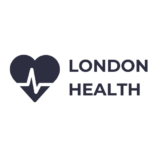Heat and ice can both be extremely beneficial to treating injuries or muscular conditions but it is important to realise when to use which type of treatment; heat and cold have different effects on the body and the incorrect use of a treatment can make the situation worse.
Heat for injuries
Heat has a relaxing effect on the muscles and can be extremely soothing to a chronic injury such as persistent pain in the lower back or a recurring overuse sporting injury, for example. Heat can cause the tissue to swell as it increases blood flow to the area where heat is applied; heat should not be applied to the body after activity or after an acute injury, as it will cause inflammation. Heat should be used before activity to warm and loosen up the muscles (heat should be moderate to prevent the skin being burnt). Heat treatment is usually done using heat pads or hot water bottles.
Ice for injuries
Ice is something of a miracle treatment when it comes to acute injuries; applying ice to an injury can reduce swelling by decreasing blood flow to the affected area and helping to flush out waste products from the injured tissue (ice should not be applied directly to the skin as this can damage it- it should be wrapped up in a towel or cloth and then put on the skin.) Ice should be used after physical activity for athletes with overuse or chronic injury; it should not be used before physical exercise.
Combination therapy
Many chiropractors find that a combination of both ice and heat produces the best results. The treatment is done using a sequence of applying ice and then heat to the injured area. Initially the area should be iced for a period of 10 minutes before heat is applied for 5 minutes; after each combination of heat and ice treatment the patient should be encouraged to do some light stretches. The treatment is usually carried out for between thirty minutes and one hour.
Are heat and ice treatment painful?
These treatments are designed to ease pain and are not painful; it is likely that the patient will experience pain during the treatment but this will be due to the discomfort produced by the injury, rather than the treatment itself.

